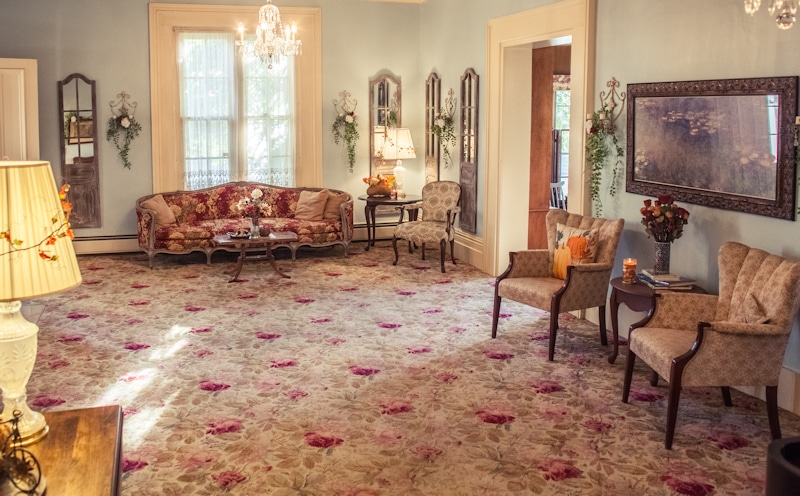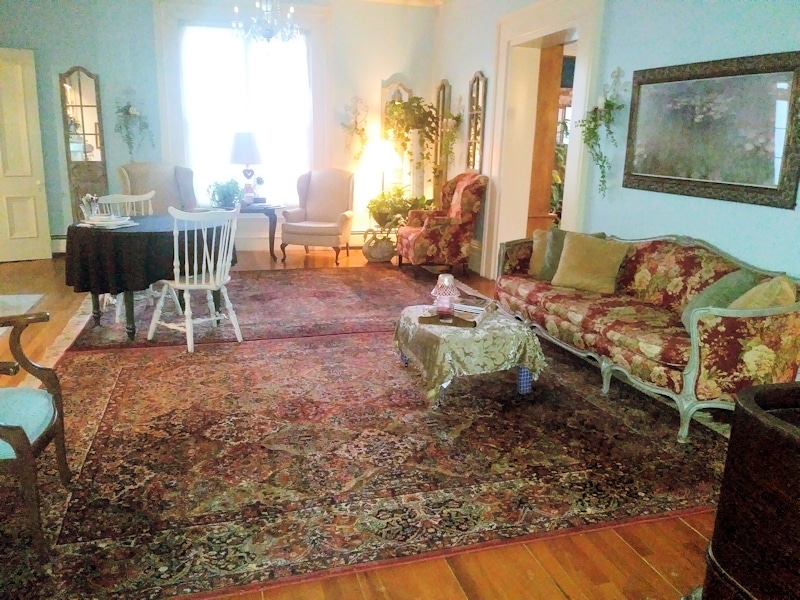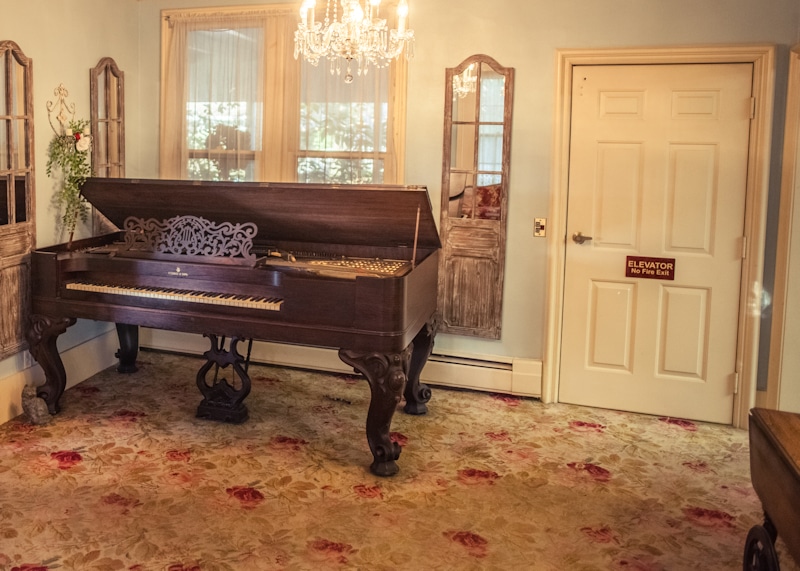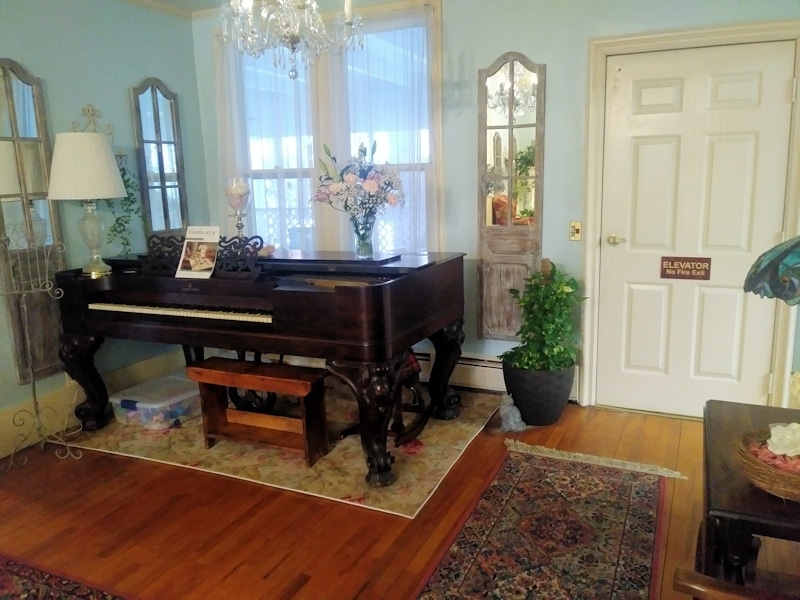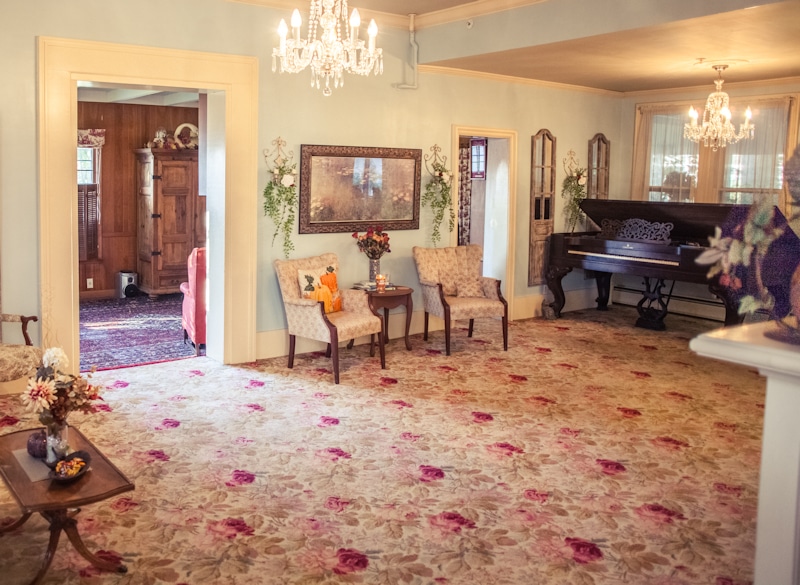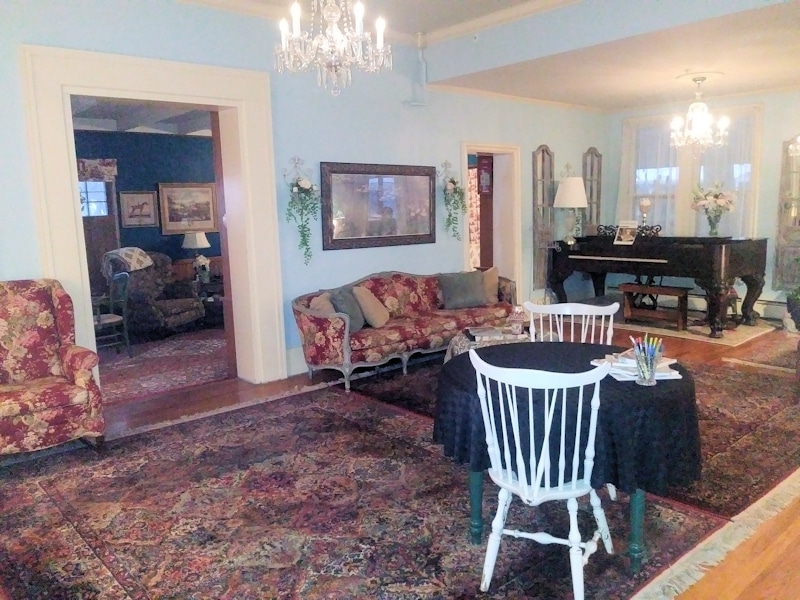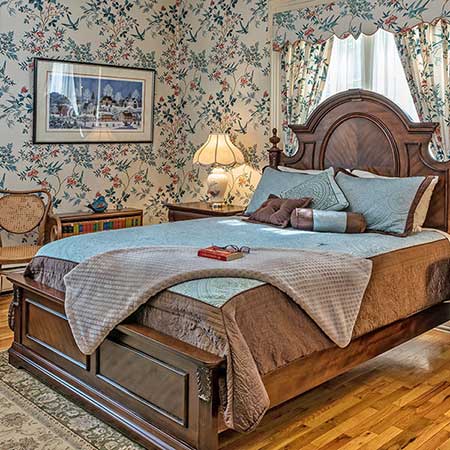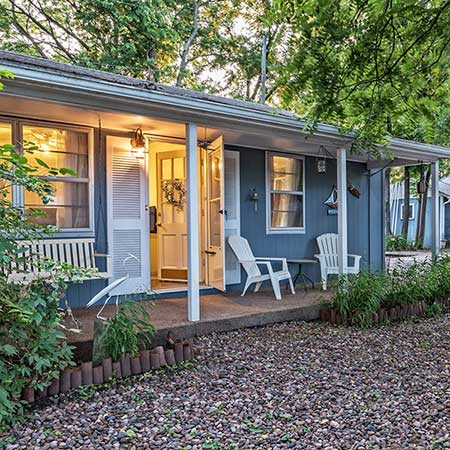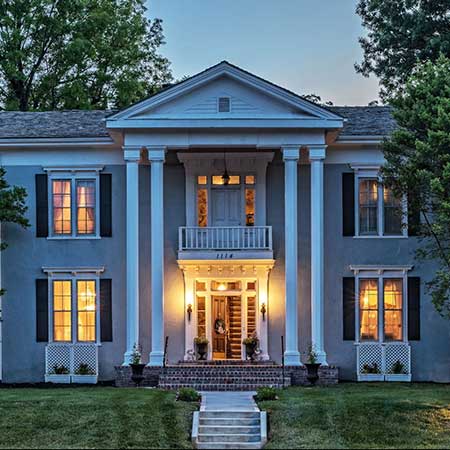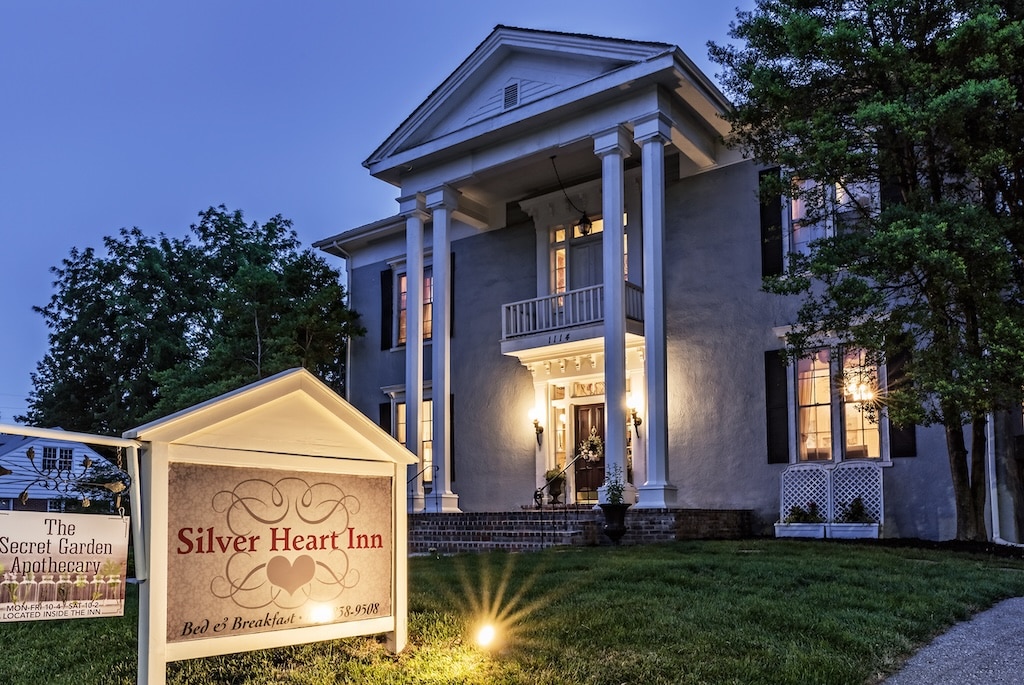Over two days, Melanie and crew removed the cabbage rose carpeting from the main parlor. The wool carpeting had stood up for ages, but it finally succumbed to wear and tear. Originally installed in the 1950s, it is fair to say that it was one of the first wall-to-wall carpets in Independence.
An Historical Reminder
When we bought the house in 2012, there was identical wool carpet on the floor of the dining room. Because it was stained and water damaged beyond repair, we immediately took it up. But the carpet in the parlor was in better condition than the dining room, though it had definite wear patterns in high-traffic areas. We left the carpet in place there as a vivid reminder of the house’s historical past. In corners where the traffic was minimal, it was possible to see the colors nearly as bright as when the carpet was new.
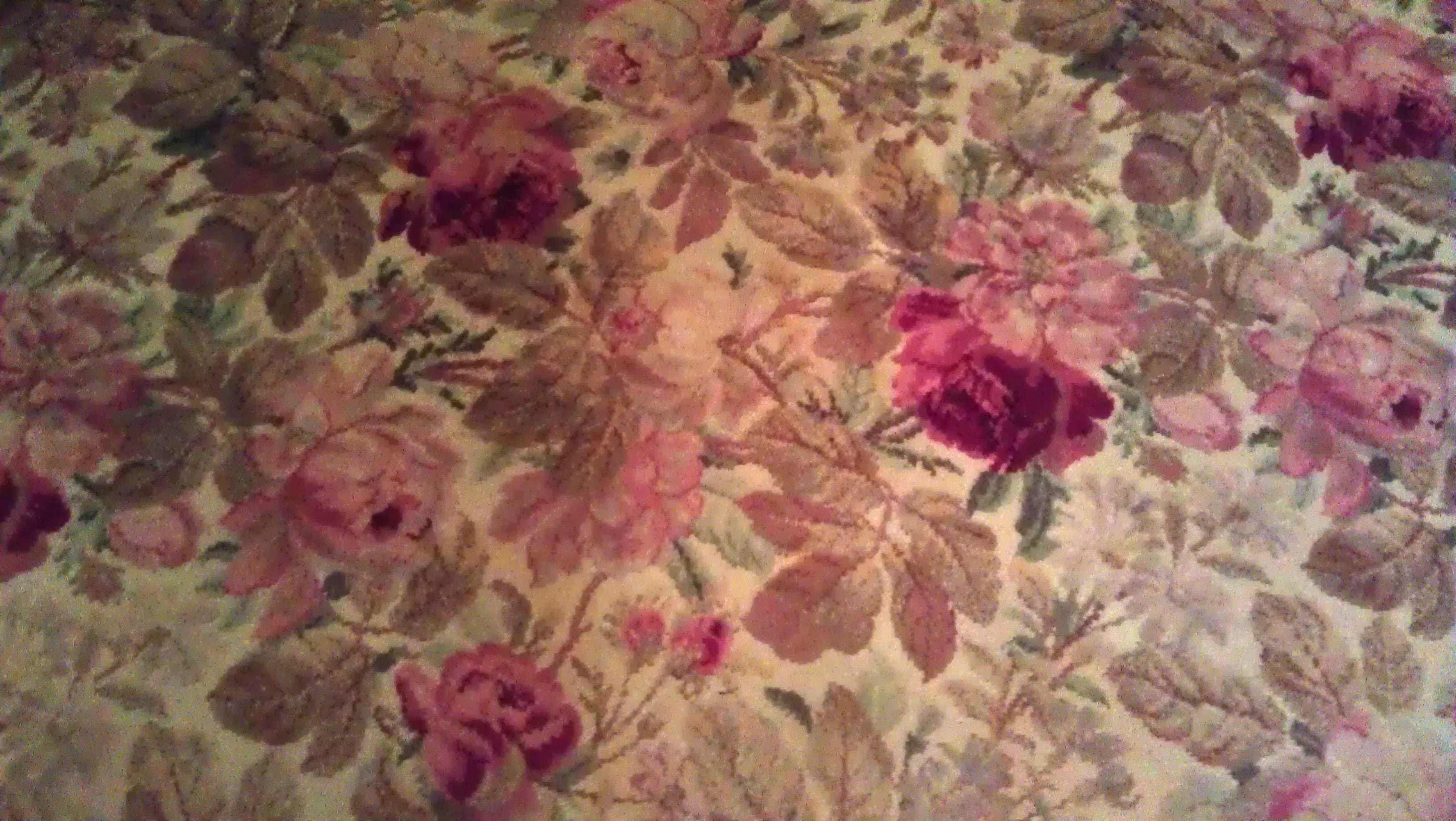
The Carpet
The Gamble family told the tale of how Avanell had the wool carpet installed when Roy was out of town. Roy reportedly did not like the carpet at first, but it grew on him. The carpeting featured a pattern of pink cabbage roses (Rosa centifolia) with green stems and foilage. The installation included premium horsehair padding and carpeting stretched to wooden tack strips. The manufacturer name, Karagheusian, was stamped on the backing of the carpeting along with the carpet line, Gulistan.
Karagheusian Rugs
Two Armenian brothers, Arshag and Mihran Karagheusian, belonging to a family that had been weaving rugs in Turkey since 1818, emigrated to America in 1896 to flee persecution by the Ottoman Turks. In 1904 they opened a carpet mill in Freehold, New Jersey and soon became a major employer in the area. In the 1930s, they wove the carpet for the Radio City Music Hall and the United States Supreme Court Building. The Karagheusian Gulistan label represented the top of the line.
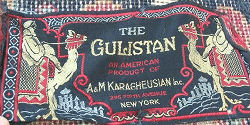
Time Marches On
By the 1950s, the Karagheusians had added tufted carpeting to their line of woven rugs, continuing under the Gulistan name. During these prosperous times, many Americans installed wall-to-wall carpeting in their homes. The Gambles were one of the first families to do so in Independence.
Arshag Karagheusian, the last surviving brother, passed away in 1963. The company was sold and the carpet mill in Freehold was closed the next year. Bruce Springsteen sang about the carpet mill in the song, “My Hometown,”
They’re closing down the textile mill across the railroad tracks
Foreman says these jobs are going boys and they ain’t coming back
Gulistan
The Gulistan was the title of an influential book of stories and poems written in 1258 by the Persian poet Sa’di. Gulistan means “rose garden,” a collection of roses as a metaphor for the collection of stories and poems. The book was (and is) widely quoted in the East for its wisdom. “I was sad because I had no shoes, until I met a man who had no feet,” is from The Gulistan.
Now and the Future
Our parlor now has a hardwood floor covered by two large woven rugs. It is quite elegant, yet we miss the original wool carpeting with the roses. We hope one day to possibly have the carpet reproduced, so that the Karagheusian Gulistan design might one day return to the Silver Heart Inn.
Before and After Photos
In October 2015, a photographer took pictures of the inn, including the parlor. To compare, I recently (February 2019) took some pictures with my phone to match those shots. Please excuse my lousy photography. We currently have two rugs covering the wood floor. And over the years, we’ve moved the furniture around.
